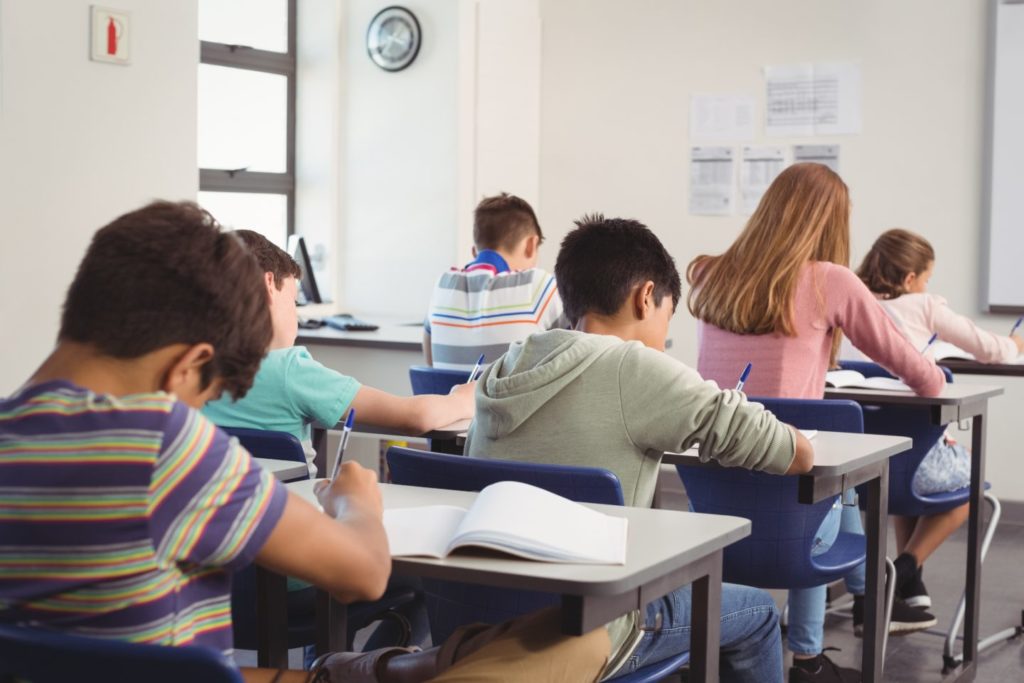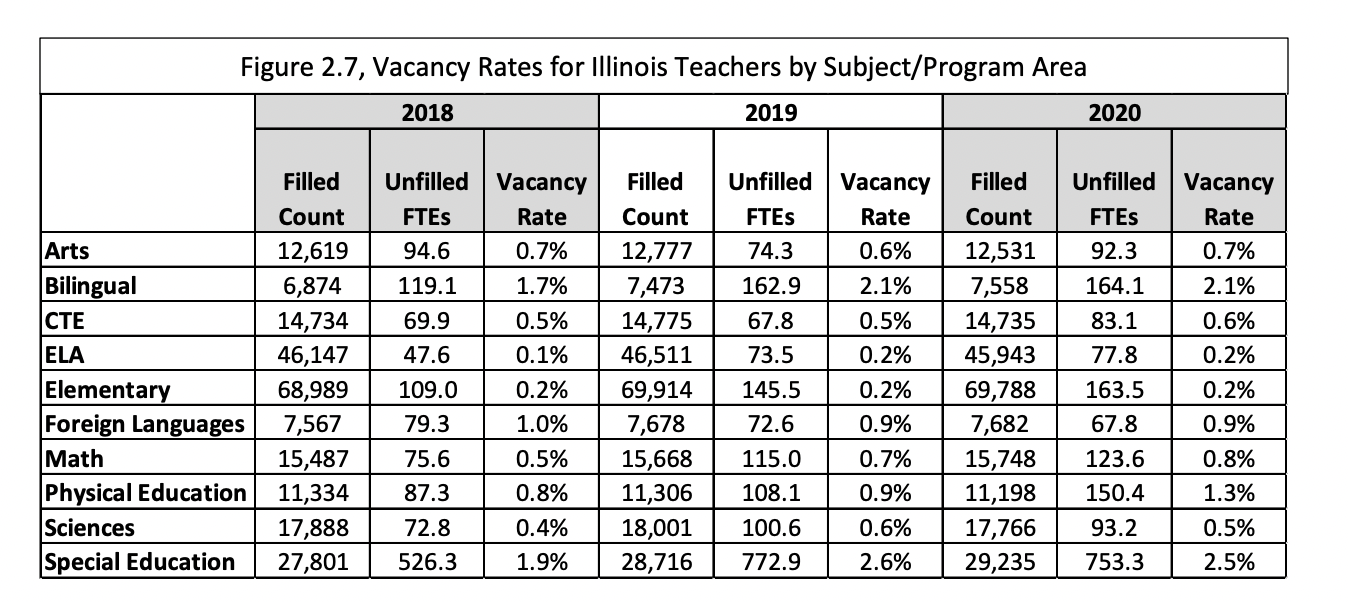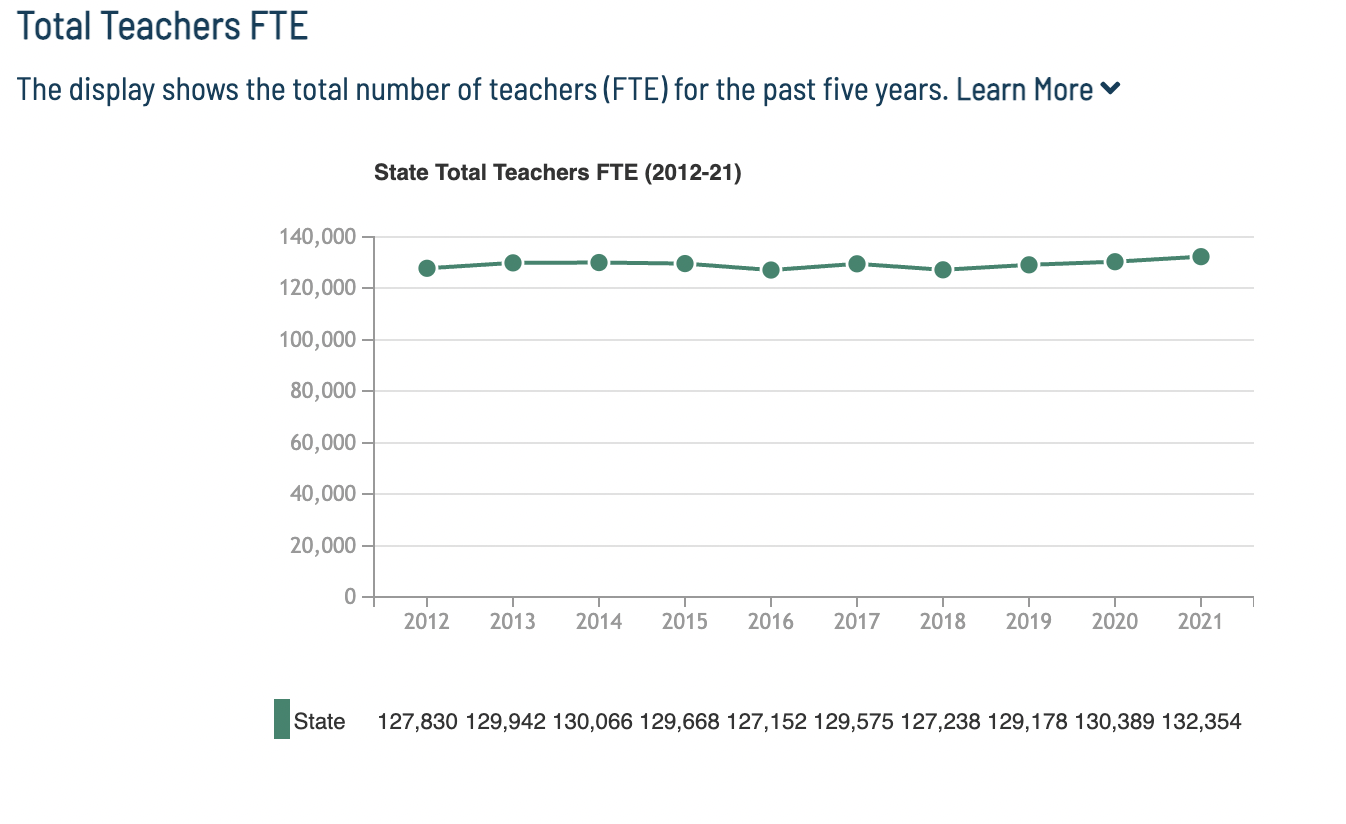Lawmakers also remain concerned. Lawmakers have passed a number of measures in recent years to address the perceived shortage of educators. In April, Gov. J.B. Pritzker signed a package of bills to simplify the licensing process for educators, lower licensing fees and create opportunities for prospective educators.
The Illinois Federation of Teachers did not respond to a request for an interview regarding demand for teachers in Illinois. The Illinois Education Association, which represents 135,000 educators in the state, also did not respond to a request for an interview regarding demand for teachers in Illinois.






